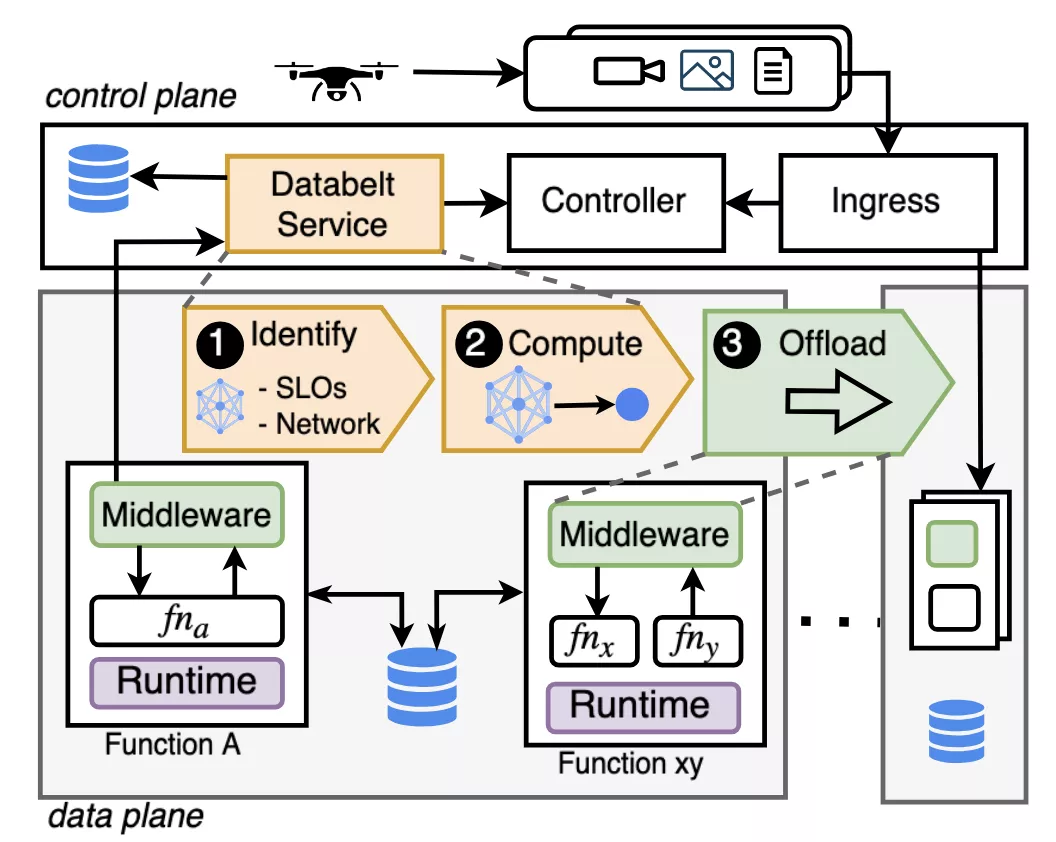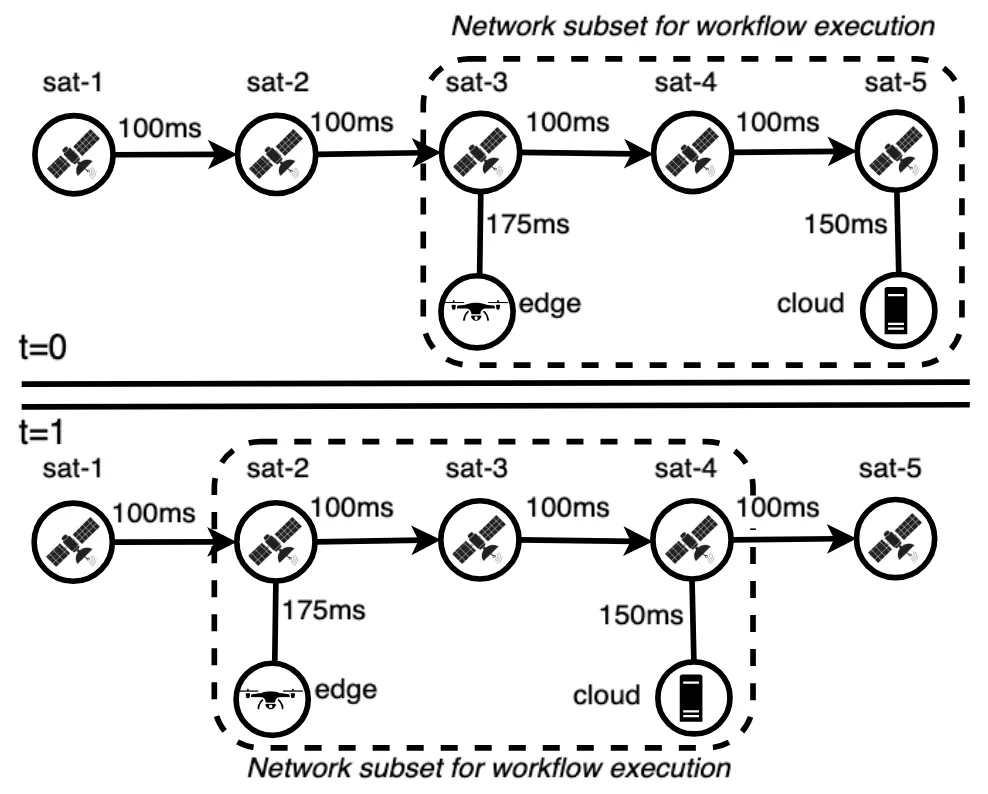
Förderjahr 2024 / Projekt Call #19 / ProjektID: 7442 / Projekt: LEO Trek
Low-Earth-Orbit (LEO) constellations extend the Edge–Cloud Continuum into an Edge–Cloud–Space 3D Continuum, where nodes move, links appear and vanish, and latency/bandwidth fluctuate constantly. Traditional serverless workflows assume stable networks and centralized storage, which quickly become a bottleneck when functions span satellites, the edge, and the cloud. Databelt is our state-aware serverless model and system that continuously places, propagates, and fuses function state along the workflow’s path, anticipating orbital movement and meeting application SLOs.
Key Contributions:
- Databelt: A novel state-aware serverless model and architecture that enables state placement in the dynamic and heterogeneous environments of the 3D Continuum. Databelt allows serverless functions to move the data in orbit closer to the target function, and place functions within a workflow on nearby nodes, reducing workflow latency while adhering to specific environmental conditions of the 3D Compute Continuum;
- A function state propagation mechanism that leverages node position, including edge, cloud, and satellite, to identify the neighbor nodes and propagate the state to specific nodes within the execution range while complying with SLO requirements.
- A function state fusion mechanism to avoid multiple state retrievals for functions that share the same serverless runtime, thus minimizing storage operations to a constant request amount instead of a linear increase and consequently reducing latency.

Fig 1 shows Databelt’s execution model that proceeds in three lightweight phases. When a workflow stage starts, Databelt first identifies the live topology (i.e., nodes, links, and their latency/bandwidth windows), excluding nodes that are about to leave the communication range. It then computes a shortest propagation path, reverses it to prioritize nodes closer to the eventual destination, and selects the first candidate that satisfies a maximum migration time bound derived from data size and available bandwidth. Finally, it offloads state to that target; if the node is temporarily unreachable, Databelt safely falls back to the current executor and re-evaluates on the next step. In parallel, when several functions are co-located in one sandbox, a small middleware bundles their state reads and writes and serves them from local storage whenever possible. Access control remains strict via immutable, per-invocation Databelt State Keys, which allow each function to retrieve only the state it is entitled to.

Figure 2 shows that as satellites progress in orbit from t = 0 to t = 1, Databelt adapts the placement subset, avoiding nodes drifting out of range and keeping the state near the next executor to preserve low retrieval latency and workflow continuity.
We evaluated Databelt on an ARM cluster representing edge, LEO, and cloud nodes with controlled, time-varying latencies. Across sequential workflows with increasing input sizes, Databelt reduced end-to-end latency by up to 66%, increased throughput by up to 50%, and increased local state availability to 79%, thereby reducing the mean hop distance to 0.21. Under parallel fan-out, it reduced latency by 47% and improved throughput by up to 91%, while maintaining stable CPU and memory usage. Function-state fusion contributed an additional ~20% latency reduction by eliminating redundant storage operations, with a constant storage overhead that is independent of the fusion depth. Control-plane decisions remained efficient at simulated scales up to 10,000 nodes thanks to candidate-subset selection that avoids full-graph recomputation on every step.
Databelt is designed for the realities of the 3D Continuum: links are intermittent, nodes move, and SLOs matter. By anticipating motion, minimizing remote I/O, and keeping state where the compute will be, not where it was, Databelt turns dynamic topologies from a liability into an optimization surface for serverless workflows spanning edge, cloud, and space.
The source code for Databelt is available on GitHub, and additional details can be found in our paper.



